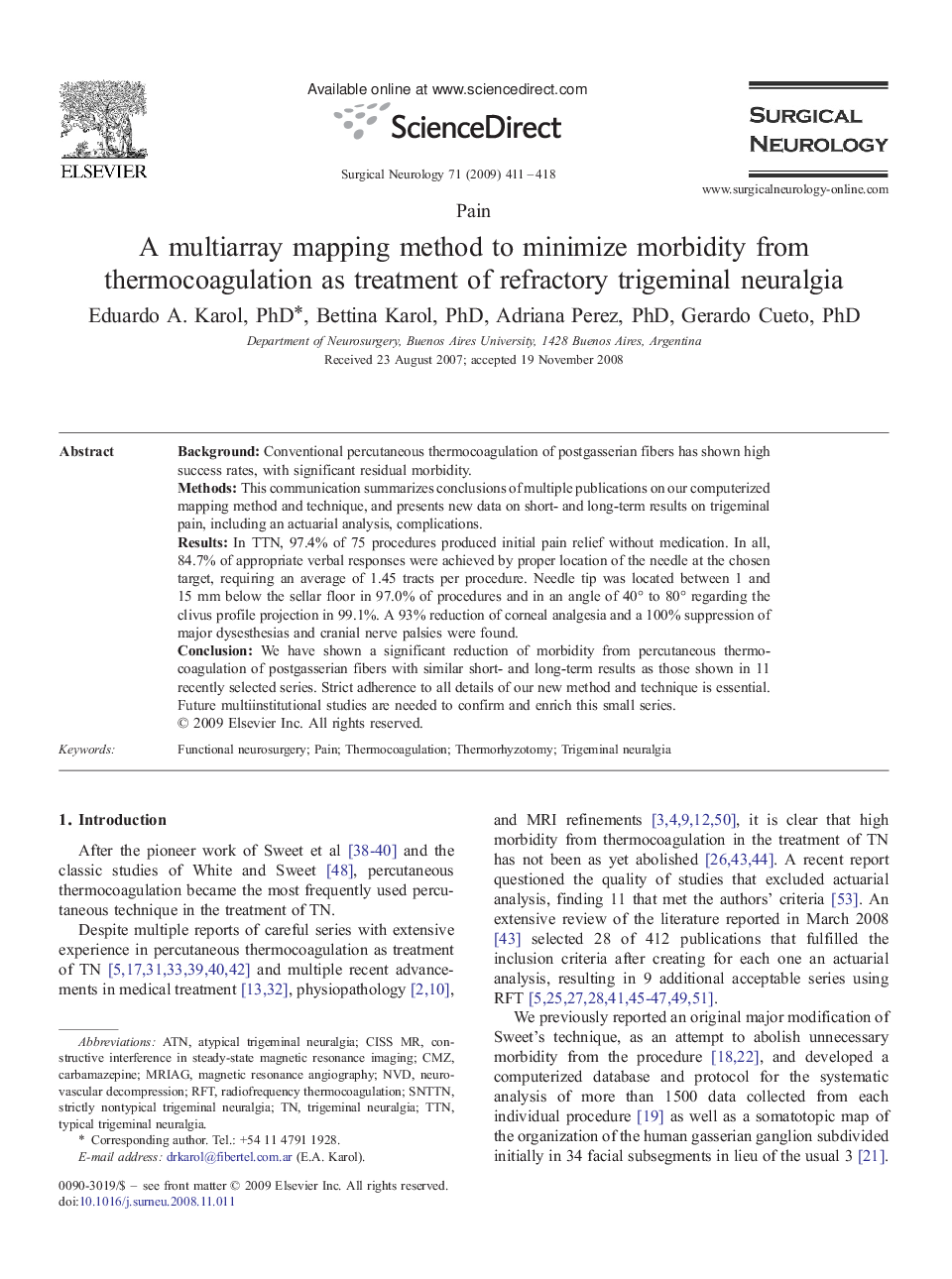| Article ID | Journal | Published Year | Pages | File Type |
|---|---|---|---|---|
| 3092556 | Surgical Neurology | 2009 | 8 Pages |
BackgroundConventional percutaneous thermocoagulation of postgasserian fibers has shown high success rates, with significant residual morbidity.MethodsThis communication summarizes conclusions of multiple publications on our computerized mapping method and technique, and presents new data on short- and long-term results on trigeminal pain, including an actuarial analysis, complications.ResultsIn TTN, 97.4% of 75 procedures produced initial pain relief without medication. In all, 84.7% of appropriate verbal responses were achieved by proper location of the needle at the chosen target, requiring an average of 1.45 tracts per procedure. Needle tip was located between 1 and 15 mm below the sellar floor in 97.0% of procedures and in an angle of 40° to 80° regarding the clivus profile projection in 99.1%. A 93% reduction of corneal analgesia and a 100% suppression of major dysesthesias and cranial nerve palsies were found.ConclusionWe have shown a significant reduction of morbidity from percutaneous thermocoagulation of postgasserian fibers with similar short- and long-term results as those shown in 11 recently selected series. Strict adherence to all details of our new method and technique is essential. Future multiinstitutional studies are needed to confirm and enrich this small series.
